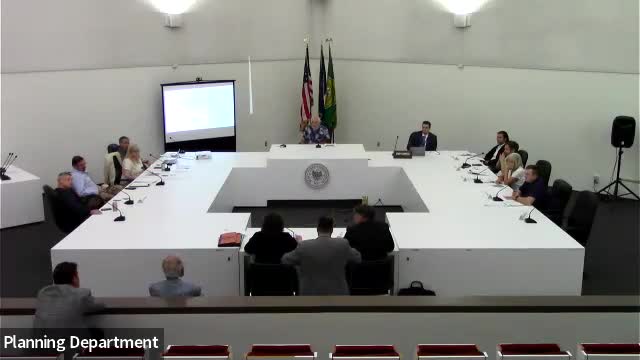City debates fate of historic building amid preservation concerns
June 06, 2024 | Binghamton City, Broome County, New York

This article was created by AI summarizing key points discussed. AI makes mistakes, so for full details and context, please refer to the video of the full meeting. Please report any errors so we can fix them. Report an error »

In a recent government meeting, officials grappled with the potential demolition of a historic building located on a commercial street, raising concerns about the implications for local heritage and urban development. The discussions centered around the necessity of the demolition for creating additional parking spaces, with board members emphasizing the importance of ensuring that any plans for the site would yield a net gain in parking capacity.
One board member proposed a conditional approval for the demolition, suggesting that it should only proceed if the planning commission approves a final plan that guarantees an increase in parking spaces. This approach aims to prevent a scenario where the building is demolished without achieving the intended urban benefit, which would render the effort futile.
Concerns were also voiced about the building's potential deterioration if demolition is denied. Some members expressed a desire to avoid allowing the structure to \"sit and rot,\" fearing that neglect could lead to further complications and loss of historical value. The applicant, known for their commitment to the community, was noted for their willingness to preserve valuable elements within the building, should they be unable to proceed with the demolition.
The meeting also revisited the city's historic preservation guidelines, which discourage the demolition of structures with significant architectural or historical value. These guidelines highlight the importance of maintaining buildings that contribute to the character of the district and contain unique craftsmanship that cannot be easily replicated. The board acknowledged that any decision regarding the building must consider these guidelines, as well as the economic viability of the property.
As discussions continue, the board faces the challenge of balancing the need for urban development with the preservation of the city's historical assets, ensuring that any actions taken align with the community's long-term interests.
One board member proposed a conditional approval for the demolition, suggesting that it should only proceed if the planning commission approves a final plan that guarantees an increase in parking spaces. This approach aims to prevent a scenario where the building is demolished without achieving the intended urban benefit, which would render the effort futile.
Concerns were also voiced about the building's potential deterioration if demolition is denied. Some members expressed a desire to avoid allowing the structure to \"sit and rot,\" fearing that neglect could lead to further complications and loss of historical value. The applicant, known for their commitment to the community, was noted for their willingness to preserve valuable elements within the building, should they be unable to proceed with the demolition.
The meeting also revisited the city's historic preservation guidelines, which discourage the demolition of structures with significant architectural or historical value. These guidelines highlight the importance of maintaining buildings that contribute to the character of the district and contain unique craftsmanship that cannot be easily replicated. The board acknowledged that any decision regarding the building must consider these guidelines, as well as the economic viability of the property.
As discussions continue, the board faces the challenge of balancing the need for urban development with the preservation of the city's historical assets, ensuring that any actions taken align with the community's long-term interests.
View full meeting
This article is based on a recent meeting—watch the full video and explore the complete transcript for deeper insights into the discussion.
View full meeting
